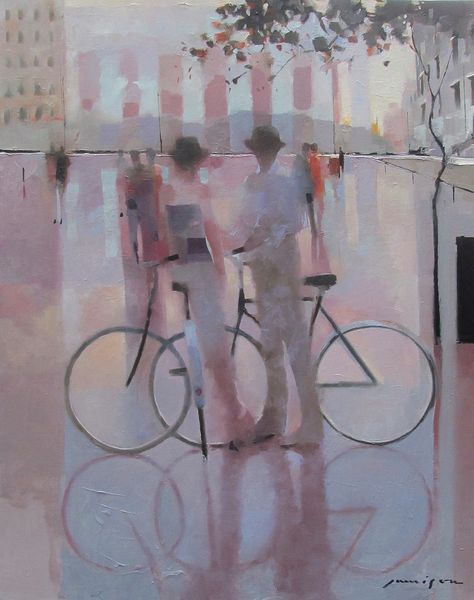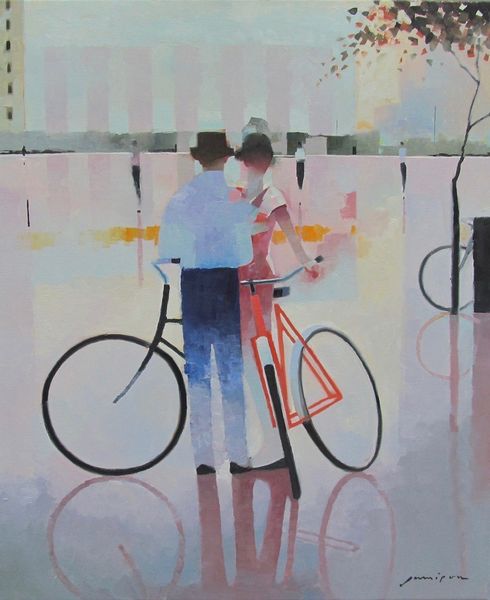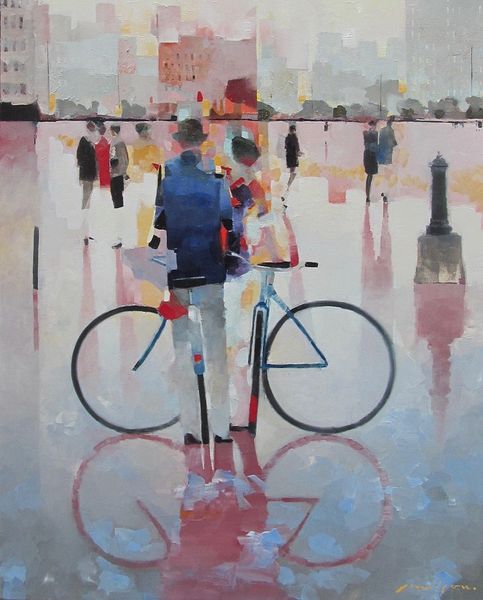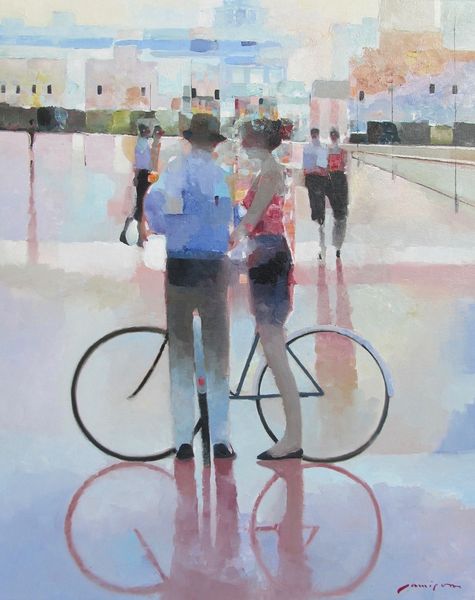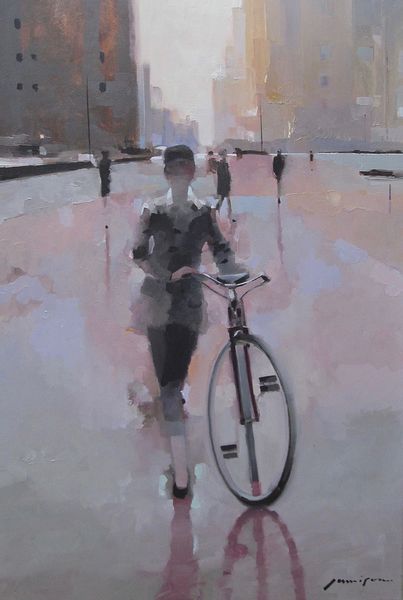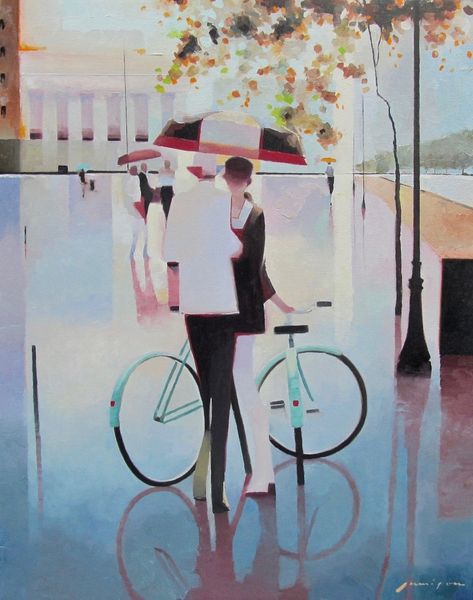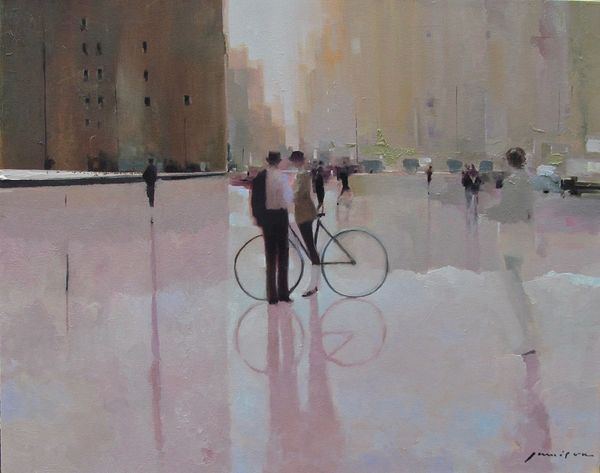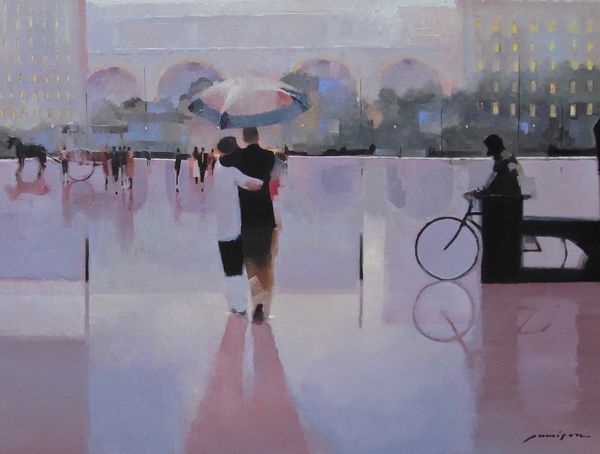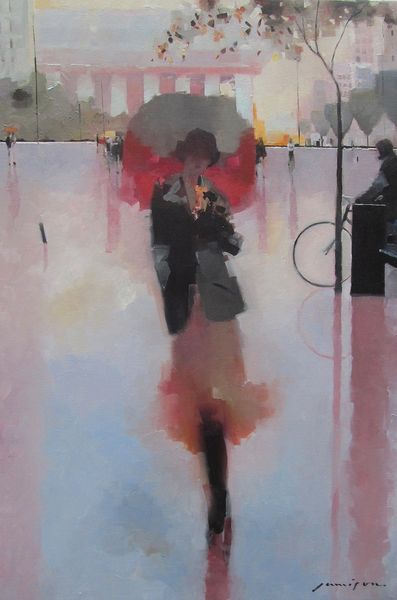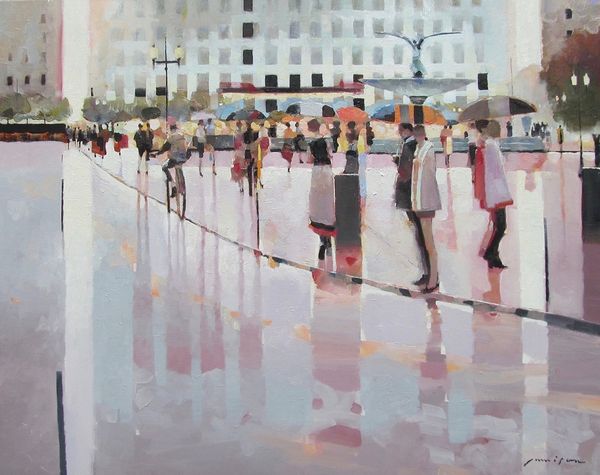
painting, plein-air, oil-paint, acrylic-paint
#
portrait
#
figurative
#
contemporary
#
painting
#
impressionism
#
graffiti art
#
plein-air
#
oil-paint
#
street art
#
neo-impressionism
#
landscape
#
acrylic-paint
#
painted
#
figuration
#
urban art
#
romanticism
#
street photography
#
painting painterly
#
cityscape
#
genre-painting
#
realism
Copyright: Modern Artists: Artvee
Curator: What a luminous painting. Jeff Jamison offers us “Our Lucky Day,” rendered with oil and acrylic. The couple seems to be pausing in a rain-slicked plaza with a bicycle. The surrounding architecture appears rather grand. Editor: My initial reaction is… dreamlike. The rosy palette softens the edges of the urban landscape. There’s an air of calm despite it clearly taking place in a city. Curator: I appreciate how the reflections, especially those distorted bicycle wheels, connect to historical associations of idealized public life and leisure. Think of flaneurs strolling through arcades or grand boulevards. Except here, with bicycles and rain, we get an interesting intersection of class, mobility, and environment. How does a city really serve its citizens, equally? Who is afforded "luck" here? Editor: It's curious how their attire, their hats especially, conjure a vintage vibe, even if the city behind them feels utterly contemporary. I’m seeing echoes of interwar optimism clashing gently with postmodern architecture, yet the couple, presented on bicycle, gestures toward the slow travel movement; a nostalgia and reimagining of pre-automobile ways of moving within a space. Curator: And there’s the title itself, “Our Lucky Day.” I mean, what constitutes ‘luck’ here? For whom does this ‘lucky day’ truly apply, considering that such romantic visions of city life often overlook marginalized experiences? We can examine not only the imagery, but also the structural inequalities inherent in the title, can't we? Editor: Absolutely. And in its imagery, that recurring, almost archetypal symbolism of reflections could speak to how these spaces simultaneously reveal and obscure the narratives of a people who move within a metropolis. It suggests not just surface appearances, but unseen layers of shared history, desire and anxiety. It asks the viewer to contemplate luck as a psychological concept but equally it seems to nod towards the cyclical return, the memory and legacy of visual symbology in civic engagement. Curator: So true. The layers here certainly speak to a richer societal context. Editor: A lot to consider…thank you for prompting me to see "Our Lucky Day" with fresh eyes. Curator: Indeed, and perhaps, seeing how images speak, across generations, to the conditions that produce our perceptions.
Comments
No comments
Be the first to comment and join the conversation on the ultimate creative platform.
